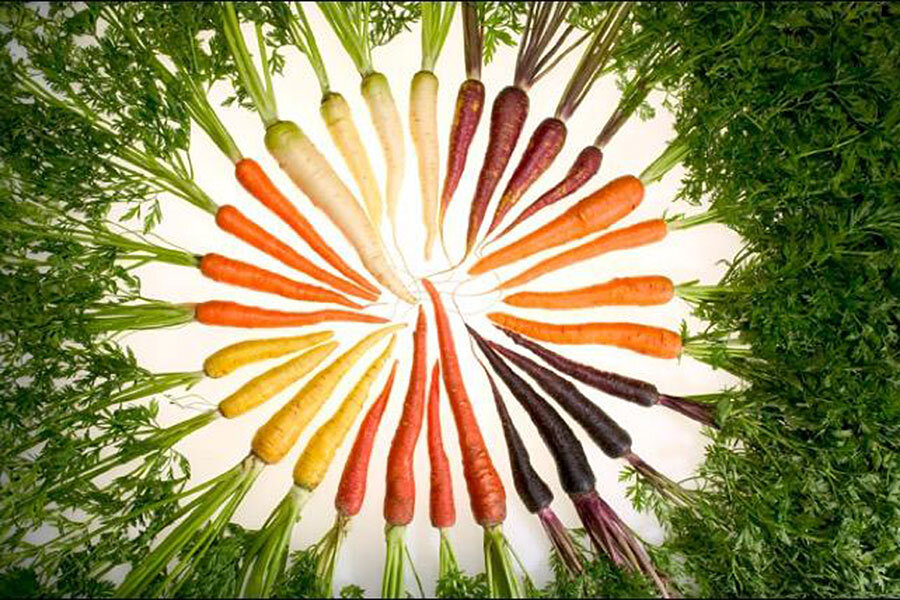Why are carrots orange?
Loading...
What's two plus five? Three times nine? The square route of 16?
Now name a vegetable.
Chances are, you picked a carrot. Why? Because when we do math, we tend to think of the color orange. And which vegetable is indelibly linked to orange? The humble but ubiquitous carrot.
Now, after sequencing the carrot's entire genome, a team of researchers has identified the gene responsible for the vivid coloration: the memorably named DCAR_032551.
"This work was really about developing a new tool for vegetable science, given the importance of the crop," says coauthor Megan Bowman, a visiting research associate at Michigan State University at the time of the study, in a telephone interview with The Christian Science Monitor.
"The genome sequence is very, very good, so it'll be a fantastic resource," she says.
Surprisingly, carrots have not always been orange. In fact, their wild relatives still lack any pigmentation at all, stubbornly clinging to a ghostly shade of white.
How wild white ancestors gave rise to the orange armies that adorn our grocery stores today remains unclear, but one thing seems certain: the carrot's first color wasn't orange.
The first cultivated carrots, appearing in Asia 1,100 years ago, were purple and yellow. The orange carrots of today "are a result of many years of plant breeding and selection," explains Dr. Bowman.
Today's familiar hue may say just as much about history as biology. 17th century Dutch farmers are said to have dreamt up orange carrots to honor William of Orange, according to the World Carrot Museum.
Whatever the reason, "the popularity of orange carrots is fortuitous for modern consumers," the authors write in their paper, published Monday in Nature Genetics, "because the orange pigmentation results from high quantities of alpha- and beta-carotene, making carrots the richest source of provitamin A in the US diet."
Nutritionists say that orange carrots are the most nutritious of all, and the deeper the color, the higher the nutrient content. With the preference for ever more intensely orange crops, artificial selection has increased the carotene content of carrots by 50 percent since 1970 – which may have contributed to their four-fold increase in consumption over the past 40 years.
The carrot, which contains 32,000 genes, joins a select group of about a dozen vegetables to have had their entire genome sequenced. This latest work confirmed that a gene called 'Y' differentiates between white carrots and orange or yellow ones, with a variation of the gene leading to carotenoid accumulation.
The new sequencing also identified a second gene, previously unknown, which plays a vital role in the accretion of the colorful compounds. Both genes are recessive, which means that two copies of each are necessary for carotenoids to build up in a plant.
In this way, artificial selection by growers – perhaps for no other reason than to "differentiate between wild carrots and the plants they intended to grow," according to a University of Wisconsin-Madison press release – was vital in arriving at today's bright color.
Going forward, this deeper understanding of the mechanics behind both carrots' pigmentation and carotenoid accumulation could help develop similar mechanisms in other species, say researchers.
And regardless, the more we understand about carrots, the better, senior author Philipp Simon noted in a press release.
"In one square meter you can grow [enough] carrots per year to feed up to a half dozen adults," he said.








